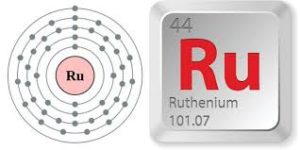What is the special feature of Ruthenium (Ru)? « Back to Questions List
|
Ruthenium (Ru) has been identified as possessing unique magnetic properties at room temperature. The chemical element becomes the forth single element to have this unique quality. The discovery is made by the researchers at the University of Minnesota. Ferromagnetism is the feature by which certain materials get attracted to magnets or become permanent magnets. The property of magnetism has been in use for various purposes from ancient times. So far only three chemical elements on the periodic table were found to be demonstrating the characteristic. Iron (Fe), Cobalt (Co), and Nickel (Ni) were the three elements known to have magnetic properties. Present discover makes Ruthenium also a member of this elite group. The rare earth element Gadolinium (Gd) also exhibits magnetism, but not at room temperature. Magnets have been in use from ancient times for navigation. Magnetism is also applied in devices in computer memory and logic industry and for functioning of sensors. It is vital element in electric and electronic equipment and various other industries. Sensors, generators, spintronic memories, hard disks in computers, electronic motors etc utilize magnetism. The discovery could bring rapid changes in the field of semiconductor industry. Though magnetic recording is widely used in data storage, magnetic based random access memory and computing are still in evolving stages. The discovery is capable of prompting breakthrough achievements in computing performance and efficiency. Ruthenium is resistant to oxidation and has a high thermal stability. Both are crucial features for better magnetic memories. The new discovery demonstrates that ultra-thin films of Ruthenium (Ru) is capable of achieving ferromagnetic phase. Seed layer engineering was adopted for this discovery. The details of the research are published in the latest issue of Nature Communications. Patrick Quarterman, a recent University of Minnesota Ph.D. graduate is the lead author of the paper. He is also a National Research Council (NRC) postdoctoral fellow at the National Institute of Standards and Technology (NIST). The announcement of discover was made by Robert F. Hartmann and Jian-Ping Wang, the co-authors of the paper. The discovery could be achieved after experiments of nearly two years.
The ability to manipulate the characteristics of matter at the atomic scale is the corner stone of modern information technology. Identification of magnetic property in Ruthenium (Ru) will trigger similar researches and identification of more chemical elements with magnetism, expects the scientists. Osmium: The densest stable element on earthWhat are the features of sodium? |

